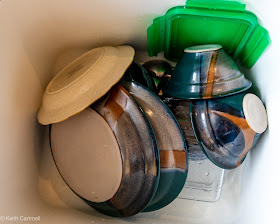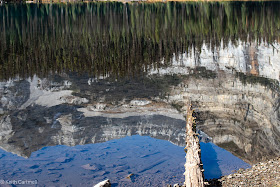Yesterday was a good dither. It actually produced a result, in that I now know which images made the podium for December. I decided that while I might go out and seek images today, they would be unlikely to hit the podium. It's kind of grey outside, with light snow and crappy light.
And of course, one must consider this time of year is perfect for being a slug. After all, there's all the heavy duty digesting to do.
But image of the year remains elusive. There are more than 100 images that have been rated with 4 or 5 stars throughout the year. I like to review them and see if they still hold up. Lots of times I've reconsidered, and wondered what I was thinking. Trying to be fair, there are nearly 2000 images with 3 stars, meaning I've edited them, and they are not a race or a community association event. I like to review them to see if there are any overlooked gems.
It also gives me a chance to review the memories involved in making the images. For most of them I can remember where and when they were done, and who was with me, if anyone. That brings up the other parts of the event. The major events, of course, were the trips to Newfoundland and to Churchill with Linda, but there were lots of great rambles with Sean, and fun photo sessions with the best model ever, Michelle. Let's just say a large fraction of the photos have Michelle in them.
Some of you are acutely aware of how amazing it is that we can see images on a computer screen in astonishing detail, but many people take it totally for granted now. From getting to the place where the photo was made, capturing the image in the first place, the process to get the image to a state we can see it on screen, and then share it with anyone who cares to click on a link, the whole process is astonishing.
There are people alive now who remember when digital computers were not a thing. I was ending high school about the time personal digital computers became available. The earliest incarnation of the iPhone was still a dream. To say they have progressed in leaps and bounds is the understatement of all time.
And yet, it could all go away in a digital catastrophe or a forgotten password or outdated operating system. Even with multiple backups, it's possible for all the images on my hard drive to become unavailable. It wasn't so long ago I discovered an old zip drive buried at the bottom of a box of stuff. I've no idea what actual format that data is stored in, and I no longer have a computer that can physically connect to it, let alone read the data. I seriously doubt there was anything important on it.
Or, think about what happens if I become unavailable for some reason. A few days ago a thief fleeing police crashed into several cars. A little girl was killed, and several are in the hospital with life threatening injuries. With all the self-entitled idiots out on the road, I'm acutely aware it could happen to me. Travelling in a car is one of the most dangerous things a Canadian can do. What then happens to my images?
All those backups in the cloud? On the cloud? Cloud-based? Whatever. I don't really believe in them. All cloud means is someone else's computer. Someone you don't know. Someone who says their computer is some number of 9's reliable. Someone who can be bought by some evil billionaire who wants to plunder the data. A computer that is connected to your computer via a system that is incomprehensible to most users.
Can you describe in detail what happens behind the scenes when you click on a link, and a fraction of a second later an image or page of text appears? I can think of two of my readers who could probably give it a good college try, and not be laughed at by those who really know. I spent much of my so-called career on the fringes of the IT industry, and I wouldn't want to have to try to provide such an explanation.
As I get older I am more and more liking the concept of "old-school". Film cameras rather than digital. Cars without an infotainment screen, although I'll admit to liking some of the other advances that came along, such as airbags, fuel injection, radial tires, and anti-lock brake systems. Books rather than movies. Prints rather than digital images, though I do take advantage of the digital world.
Books. If I look at the shelf over my desk, I can see several books of my images. Two of them are out on loan to someone who wants to pore over them and appreciate the images. Two of them are waiting for a lunch in a few weeks to go to a good home. A few copies are out in the world, available to anyone who cares to pick them up and turn pages. Which is something that nearly anyone can do. They don't even need to read English. As long as they're kept dry, those books will last decades, hopefully providing enjoyment to someone long after I'm gone. (As a hint, mom, the books are yours to do with as you please, but I'd be delighted to find you put them in the library of the place you live, once you don't need them any more.) We have books in our basement more than 100 years old, still perfectly readable, if somewhat fragile.
I've talked about film images. During the great film digitization project a couple years ago I found film negatives of Linda's family, taken before either of us were born. They got a new life in the digital world, and I could put them in the enlarger to get prints. I have a binder in the basement with over 100 sleeves of negatives. Those could live in that binder, in a box in the basement for decades, without any further care. If that box should somehow be put into an archival storage facility, the negative images would probably still be visible and available to whatever technologies exist several hundred years from now.
So where was a going with all this? Oh yes, thinking about image of the year. Still thinking. Still enjoying the memories.
I sort of thought about trying to capture all the 3 star images into one giant image shrunk down to fit in the blog, but even doing the 100 or so 4 star images is beyond me.
This is one of the images that nearly made the podium for December.
This is the oddest image in the last little while. I no longer remember why I did this. Yes mom, that dish set from nearly 40 years ago is still in daily use.
Of the Day
Driftwood (NZ)
Film
Elk Lakes. I saw this view. I got the camera out, loaded the film, and was fine tuning the composition and settings when the fisherman walked into the lake. He looked like he wasn't going anywhere soon, so I waited for the ripples to settle down a bit, hoping he wouldn't move.
Linda
Newfoundland
Polar bears
Why ever didn't I publish this, and maybe I did
In fact, I'm almost certain I did. But nobody will complain about seeing a photo of Curtis. This was Christmas 2016.
90 days, or so ago
Being the photo at the top of my 'not blogged in 90 days' smart folder. This one happens to be October 3. Balloons in Calgary used to be a common thing. I'm not sure why it's really rare now, but I expect insurance is the main reason. This one landed in the school yard just off the green space across the road from us.



























































